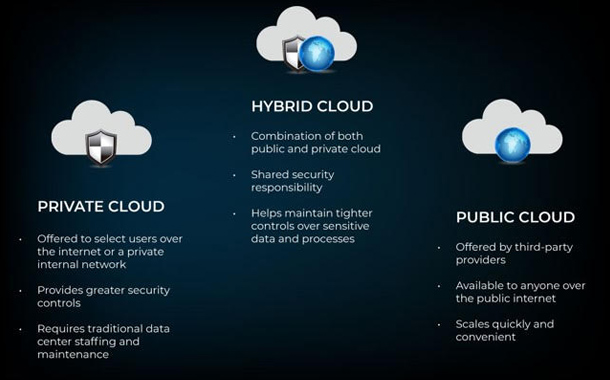There is no doubt that the pandemic has forced Indian organizations to put their digital transformation journey into high gear to address the evolving business needs and the changing landscape. According to a recent study[1], almost 95% of business leaders in India believe that the pandemic has fast-tracked at least some digital transformation programs last year. Moreover, to maintain business continuity, organisations in the country are investing in multiple cloud environments which is featured among the top five technology priorities over the next one to three years. As a result, a hybrid cloud strategy is rapidly becoming the IT strategy of choice largely due to its ability to offer enterprises the best of private and public clouds, along with edge technologies with greater choice and flexibility. However, this hybrid cloud strategy presents an opportunity for businesses to rethink their data protection and resilience approach.
It is undeniable that hybrid cloud offers enormous potential as a way to cut costs, increase agility and reduce risk. And, when it comes to resiliency, right decisions on cloud is critical for organisations who want to reduce their overall spending while expanding their ability to respond to opportunities and protect their data. In order to do this, organisations need to look at a hybrid cloud strategy wherein they have the ability to innovate and create an always-on business for their customers in the most efficient way possible.
Guiding principles to establish data resilience
At Dell Technologies we believe that there is no one size fits all solution, however, there are three broad guiding principles that could enable organisations to establish long-term data resilience for their hybrid cloud strategy:
Architecture matters
Advocate for scalable and efficient architectures, technologies and products that are built with multi-cloud in mind. Organizations must deploy solutions which provide a full range of hybrid cloud data services that simplify management of applications and data across cloud and on-premises environments to accelerate digital transformation.
Along with this, assessing all hybrid cloud infrastructure components is necessary to ensure there are no surprises in the future. Furthermore, leveraging controls such as data encryption, immutability and access controls will help ensure that data is not visible to the cloud provider or an adversary in the network. Lastly, choosing capabilities that take advantage of pay-per-consumption services so that infrastructure does not become an expense when it is not in use is also a preferred path for businesses.
Develop well-defined data protection policies
Companies need to consider local data protection regulations and how those affect the data they collect. Regulatory requirements should be reviewed in the context of storing and protecting data in a hybrid cloud model.
Organisations should take actions to ensure resilience in the event of a successful cyber-attack. The ability to get critical systems back in service has the potential to impact an organisation’s customers.
Additionally, there is a need to understand that public clouds generally operate under a Shared Responsibility Model, which means that an organisation maintains some responsibilities for their data and workloads, while the cloud provider may also take some responsibility. Data protection and availability is one aspect of the hybrid cloud model that typically falls on the customer to implement and manage. For this reason, it’s important to ensure that the corporate data protection policies extend across the hybrid cloud strategy. It is also good to ensure that the data protection strategy is up to date with the changing technology as well as the regulatory landscape.
Partner with a single data protection vendor
According to another survey[2], 83% of the respondents in APJ revealed that they were using solutions from multiple data protection vendors. The challenge that lies here is that these enterprises are likely investing more in time, money and staffing resources to protect their data and applications. Yet their annual data loss and downtime costs are significantly higher than those working with a single data protection vendor. Therefore, while thinking through a data protection plan for a hybrid cloud strategy, CIOs must partner with a single data protection provider that can protect data wherever it resides.
To conclude, organizations generally understand that a hybrid cloud strategy has many benefits. Those who adopt the broadest data protection capabilities, develop and follow strong data governance policies, have a single data protection partner across their on-premises/public cloud, and edge environments etc. will be in a position to effectively manage and protect their data and workloads. With the evolving nature of the technology landscape, it is time for businesses to stop reacting and start anticipating. Loss of critical data has the power to cripple a business in no time and instead of relying only on traditional methods of data security, organisations need to expand their horizons and look at a holistic hybrid cloud strategy. Taking this path will help businesses remove the pressure of constantly keeping track of their data and focus more on building their business.


